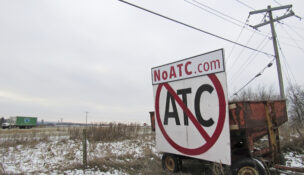When it hits the fan: A review of 'Stop the Presses'
By: dmc-admin//June 2, 2008//
 When many of us attended law school, we were taught the conventional wisdom that if a reporter called regarding a client’s legal crisis, the best (and safest) response was “No comment.”
When many of us attended law school, we were taught the conventional wisdom that if a reporter called regarding a client’s legal crisis, the best (and safest) response was “No comment.”
That was in the pre-Internet, pre-cable, pre-blog era. Then, a news cycle was measured in days, perhaps weeks, and the information sources could often be counted (maybe) on both hands.
It’s different now. We are in the era of non-stop news coverage emanating from multiple media platforms. If a response is not provided quickly, the public hears about your client’s problems almost immediately — and from your opposition’s perspective.
“Stop the Presses: The Crisis and Litigation PR Desk Reference,” a book by Richard S. Levick and Larry Smith recently published as a second edition, provides instruction to corporate leaders and advisors so they can guide a business through the multi-faceted challenges posed in this new and evolving landscape.
The book’s operative premise is that at some point, all businesses will be confronted with a corporate crisis. That is, one or more events which threaten its survival. The question is when — not whether — such a crisis will occur.
While a business cannot control the fact that bad things will happen, it can master its response. The authors note that an organization will be judged not only by the event precipitating the crisis, but also by its reaction. Thus, the authors argue that it is essential for a business to develop a crisis response plan. As the authors state, “the very existence of a crisis plan creates an immediate awareness in the corporate ranks that some response is needed or that a decision to not respond at least be a conscious and strategic decision.”
The authors write that the most important asset of any enterprise is its brand. The authors argue that today’s successful business leaders believe that a brand should be built by operating with integrity — defined as “doing the right thing when no one is watching.” This asset is “invaluable” when a crisis breaks (or, stated differently, when “someone does start watching”). In the authors’ words, such steps will assist in “bullet proofing” the brand.
The authors state that any corporate response to a crisis must be geared to protecting that brand. One such reaction is to “go beyond what is expected.” That is, “to win back disappointed audiences, surprise them with something that they don’t feel you necessarily owe them.”
If handled correctly, the crisis can be used as a way to create positive attitudes towards the company on a going forward basis. The authors cite the successful steps taken by JetBlue Airways, which, after a heated controversy where numerous passengers were left stranded, publicly apologized and created a “passenger’s bill of rights.”
When a response is needed, businesses typically believe that they have insufficient solid data to frame a comment. The authors argue that the company is still not excused from responding, even when the situation is fluid and ever-changing.
Obviously, there is an inherent tension between the communicator’s desire to provide a response and a litigator’s reluctance to set a position in stone at an early stage while information is being gathered. There is no magic solution to that dilemma. However, the book offers a framework for evaluating the issue, and invites the reader to consider various response scenarios when this happens.
Clearly, the authors believe that the best reaction is derived through the collaborative efforts of the C-suite executives along with their attorneys and crisis managers. Through such coordination, the appropriate balance is struck between communicating with the company’s stakeholders (i.e., all those who have some connection to the organization) and not prejudicing its legal position.
“Stop the Presses” is an invaluable tool for those who run companies as well as to the outside professionals who advise them. It is essential for gaining an understanding of the dynamics of responding to a crisis in today’s environment while protecting the integrity of its brand.
Nathan Fishbach is a shareholder at Whyte Hirschboeck Dudek S.C., based in Milwaukee, Wisconsin. Previously, for over 13 years, Fishbach served in a variety of positions in the U.S. Attorney's office for the Eastern District of Wisconsin, including Interim U.S. Attorney.
Legal News
- Wisconsin wedding barns sue over state’s new liquor law requiring licensing
- Audit launched of Wisconsin’s diversity efforts
- Federal appeals court approves high-voltage power line through Mississippi River refuge
- Dane County residents encouraged to weigh how to spend federal funds
- Jurors should have considered stand-your-ground defense in sawed-off shotgun killing, judges rule
- Money isn’t enough to smooth the path for Republican candidates hoping to retake the Senate
- Milwaukee election leader ousted 6 months before election in presidential swing state
- Former President Trump calls for arrest of special prosecutor Jack Smith
- Wisconsin judge dismisses lawsuit challenging state’s new wolf management plan
- Wisconsin Supreme Court issues opinion on Milwaukee Police officer fired over Facebook posts
- Gov. Evers Seeks applicants for Menominee County Register of Deeds
- Donald Trump calls Joe Biden weak on antisemitism, ignoring his own rhetoric
WLJ People
- Power 30 Personal Injury Attorneys – Russell Nicolet
- Power 30 Personal Injury Attorneys – Benjamin Nicolet
- Power 30 Personal Injury Attorneys – Dustin T. Woehl
- Power 30 Personal Injury Attorneys – Katherine Metzger
- Power 30 Personal Injury Attorneys – Joseph Ryan
- Power 30 Personal Injury Attorneys – James M. Ryan
- Power 30 Personal Injury Attorneys – Dana Wachs
- Power 30 Personal Injury Attorneys – Mark L. Thomsen
- Power 30 Personal Injury Attorneys – Matthew Lein
- Power 30 Personal Injury Attorneys – Jeffrey A. Pitman
- Power 30 Personal Injury Attorneys – William Pemberton
- Power 30 Personal Injury Attorneys – Howard S. Sicula










